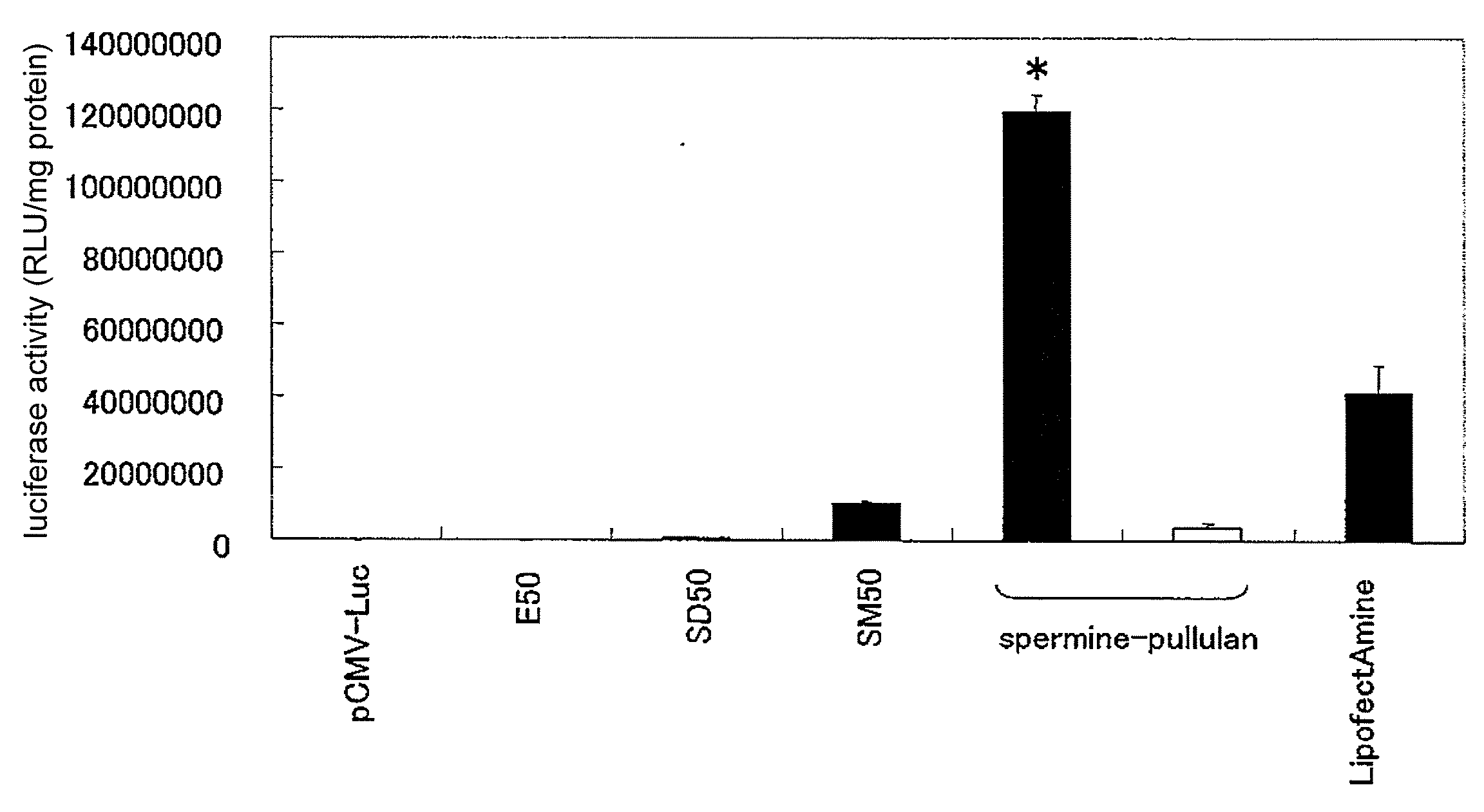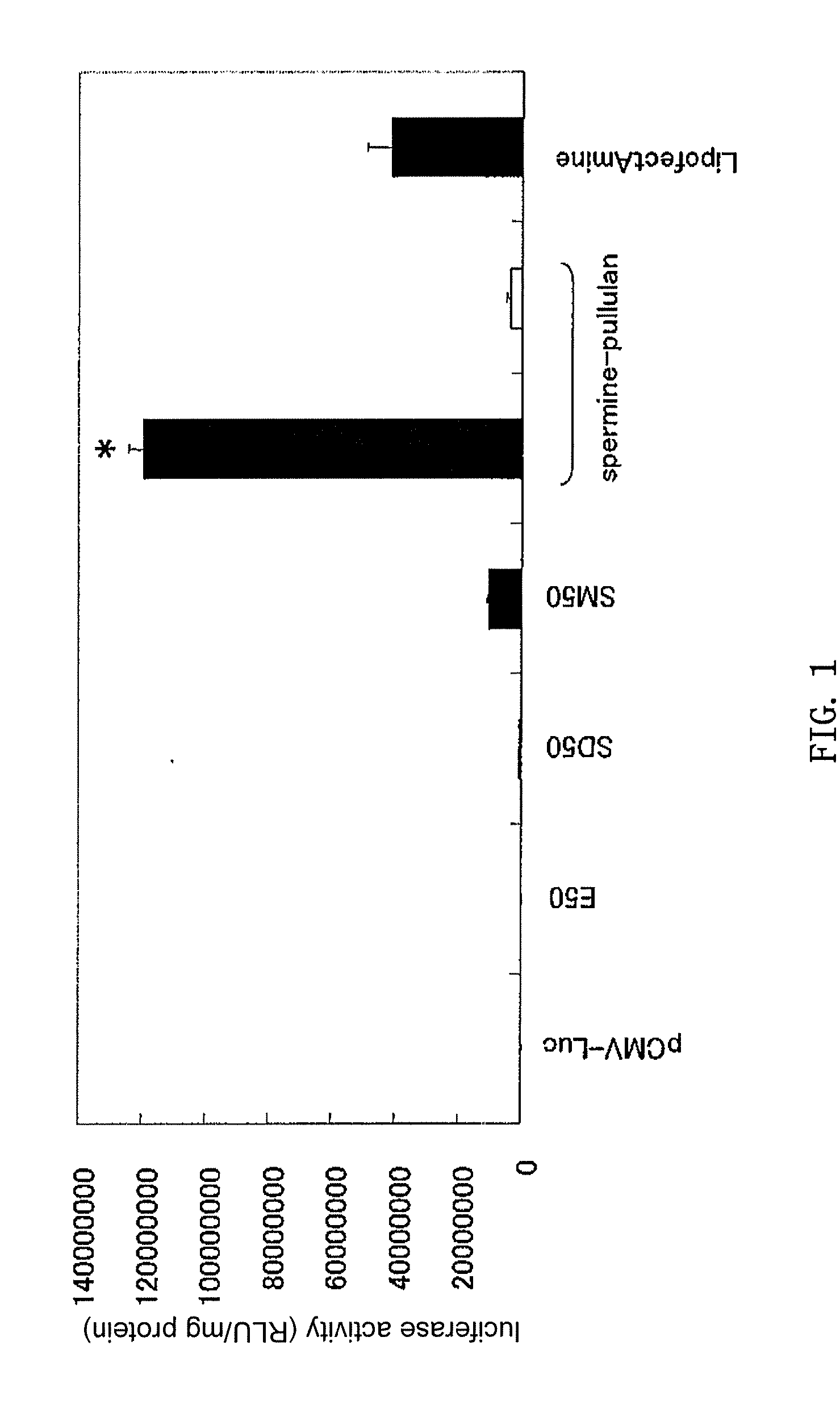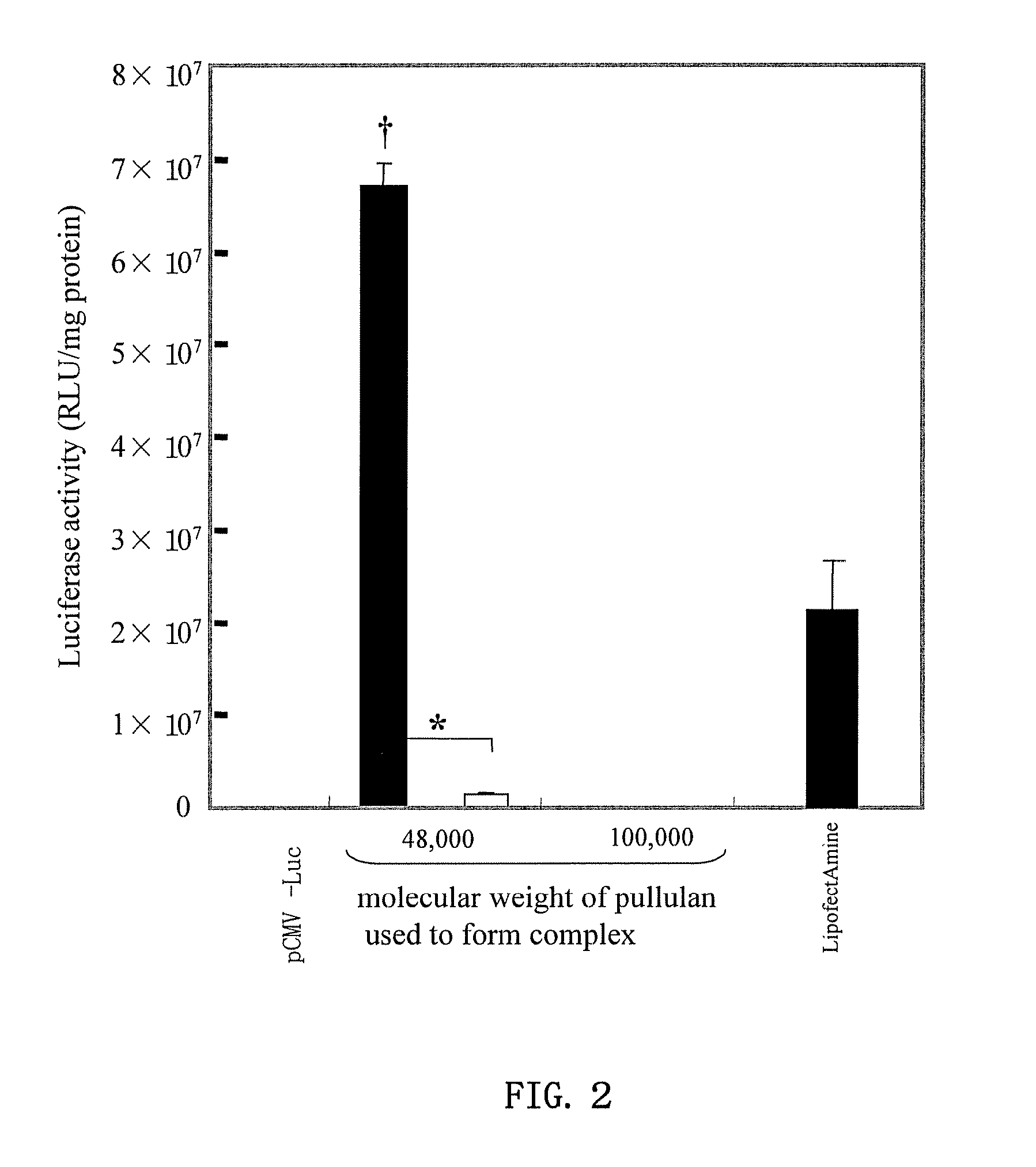Preparation For Transferring Nucleic Acid Into Cell
a nucleic acid and cell technology, applied in the field of pharmaceutical preparations, can solve the problems of high efficiency, immunogenicity, toxicity, and use of viruses, and achieve the effect of efficiently transfecting a cell with a nucleic acid
- Summary
- Abstract
- Description
- Claims
- Application Information
AI Technical Summary
Benefits of technology
Problems solved by technology
Method used
Image
Examples
example 1
Preparation of Cationized Pullulan Derivative and Cationized Gelatin
[0044]The manufacture of cationized pullulan derivative was performed by the reaction of N,N′-bis(3-aminopropyl)-1,4-butanediamine (spermine) with the hydroxyl groups of pullulan. The pullulan (weight average molecular weight 48,000 or 100,000, Showa Denko) was dissolved in anhydrous dimethyl sulfoxide (10 mg / ml). Next, 0.252 M of N,N′-carbonyl diimidazole (CDI, Nacalai Tesque) and 2.52 M of spermine (Sigma) were added, and the mixture was stirred for 20 hours at room temperature. The reaction solution was dialyzed against distilled water for 2 days, and the dialysate was lyophilized to obtain the spermine-introduced cationized pullulan derivative (spermine-pullulan).
[0045]Cationized gelatin was prepared by the chemical reaction of an amine compound such as ethylenediamine, spermidine, spermine and the like with the carboxyl groups of the gelatin (Mw=100,000, isoelectric point=9.0, pig skin collagen, acid treated, N...
example 2
[0046]Plasmid DNA containing the gene encoding luciferase (pCMV-luc) was used as plasmid DNA. After E. coli were transformed with pCMV-luc containing an ampicillin resistance gene, they were cultured for 18 hours at 37° C. in LB medium containing ampicillin. The E. coli that grew were recovered by centrifugation, and the plasmid DNA was extracted by alkaline-SDS method. To evaluate the purity of the plasmid DNA, the ratio of the absorption at 260 nm / 280 nm of the obtained plasmid DNA solution was measured and found to be 1.8-2.0.
example 3
Measurement of Amino Group Introduction Rate
[0047]The spermine introduction rate in the spermine-introduced cationized pullulan derivative was calculated by quantitation of the amino groups using the 2,4,6-trinitrobenzene sulfonic acid (TNBS) method. More specifically, 100 μL of 0.2 M phosphate buffer saline (PBS, pH 7.4), 200 μL of 4 wt % sodium bicarbonate solution, and 200 μL of 0.1 wt % TNBS solution were added to 100 μL of spermine-pullulan solution and reacted for 2 hours at 37° C. Then absorbance of this reaction solution at 415 nm was measured. When the spermine introduction rate per hydroxyl group was calculated in pullulan having a molecular weight of 48,000 and 100,000 from a calibration curve using this absorbance value and β-alanine, the rates were 28.9±0.08% and 32.3±0.18%, respectively.
[0048]The amine introduction rate of the cationized gelatin was calculated in a similar manner by the TNBS method. When the introduction rate of the amine compound with respect to the c...
PUM
| Property | Measurement | Unit |
|---|---|---|
| Fraction | aaaaa | aaaaa |
| Fraction | aaaaa | aaaaa |
| Fraction | aaaaa | aaaaa |
Abstract
Description
Claims
Application Information
 Login to View More
Login to View More - R&D
- Intellectual Property
- Life Sciences
- Materials
- Tech Scout
- Unparalleled Data Quality
- Higher Quality Content
- 60% Fewer Hallucinations
Browse by: Latest US Patents, China's latest patents, Technical Efficacy Thesaurus, Application Domain, Technology Topic, Popular Technical Reports.
© 2025 PatSnap. All rights reserved.Legal|Privacy policy|Modern Slavery Act Transparency Statement|Sitemap|About US| Contact US: help@patsnap.com



